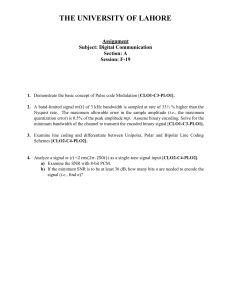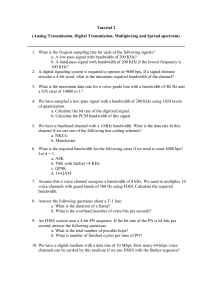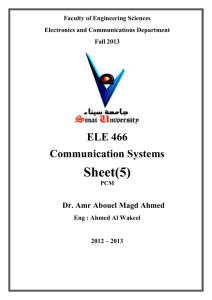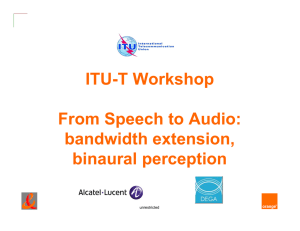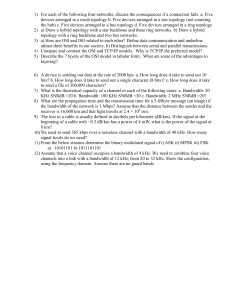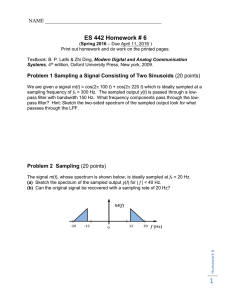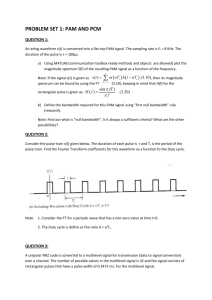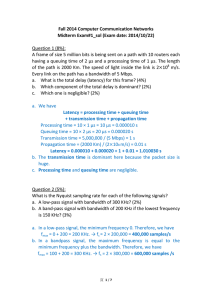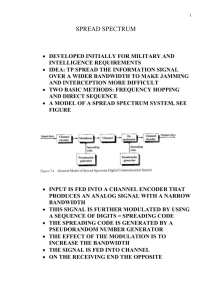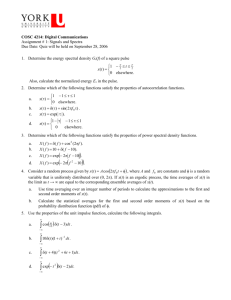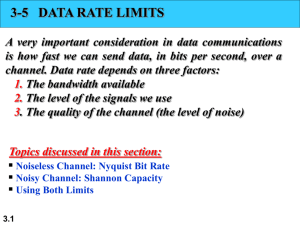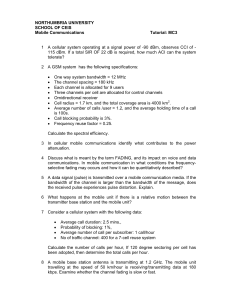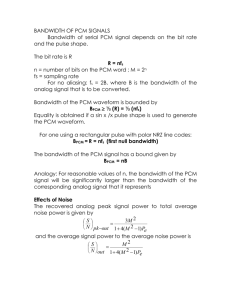Principles of Communication
advertisement
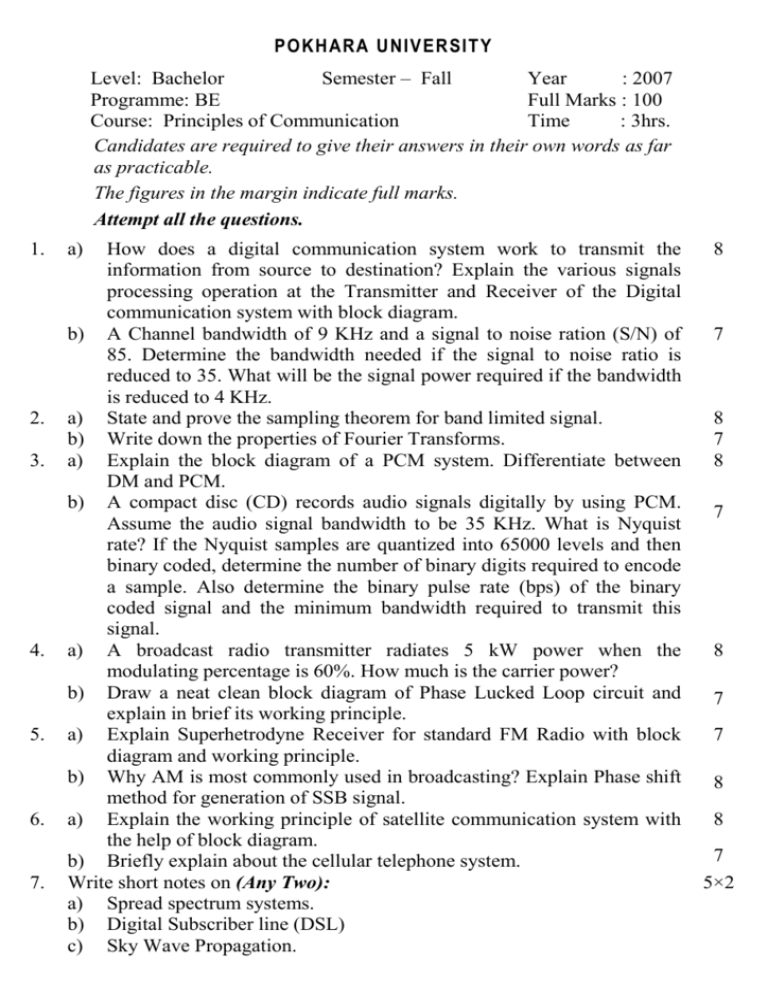
POKHARA UNIVERSITY Level: Bachelor Semester – Fall Year : 2007 Programme: BE Full Marks : 100 Course: Principles of Communication Time : 3hrs. Candidates are required to give their answers in their own words as far as practicable. The figures in the margin indicate full marks. Attempt all the questions. 1. 2. 3. 4. 5. 6. 7. a) How does a digital communication system work to transmit the information from source to destination? Explain the various signals processing operation at the Transmitter and Receiver of the Digital communication system with block diagram. b) A Channel bandwidth of 9 KHz and a signal to noise ration (S/N) of 85. Determine the bandwidth needed if the signal to noise ratio is reduced to 35. What will be the signal power required if the bandwidth is reduced to 4 KHz. a) State and prove the sampling theorem for band limited signal. b) Write down the properties of Fourier Transforms. a) Explain the block diagram of a PCM system. Differentiate between DM and PCM. b) A compact disc (CD) records audio signals digitally by using PCM. Assume the audio signal bandwidth to be 35 KHz. What is Nyquist rate? If the Nyquist samples are quantized into 65000 levels and then binary coded, determine the number of binary digits required to encode a sample. Also determine the binary pulse rate (bps) of the binary coded signal and the minimum bandwidth required to transmit this signal. a) A broadcast radio transmitter radiates 5 kW power when the modulating percentage is 60%. How much is the carrier power? b) Draw a neat clean block diagram of Phase Lucked Loop circuit and explain in brief its working principle. a) Explain Superhetrodyne Receiver for standard FM Radio with block diagram and working principle. b) Why AM is most commonly used in broadcasting? Explain Phase shift method for generation of SSB signal. a) Explain the working principle of satellite communication system with the help of block diagram. b) Briefly explain about the cellular telephone system. Write short notes on (Any Two): a) Spread spectrum systems. b) Digital Subscriber line (DSL) c) Sky Wave Propagation. 8 7 8 7 8 7 8 7 7 8 8 7 5×2


